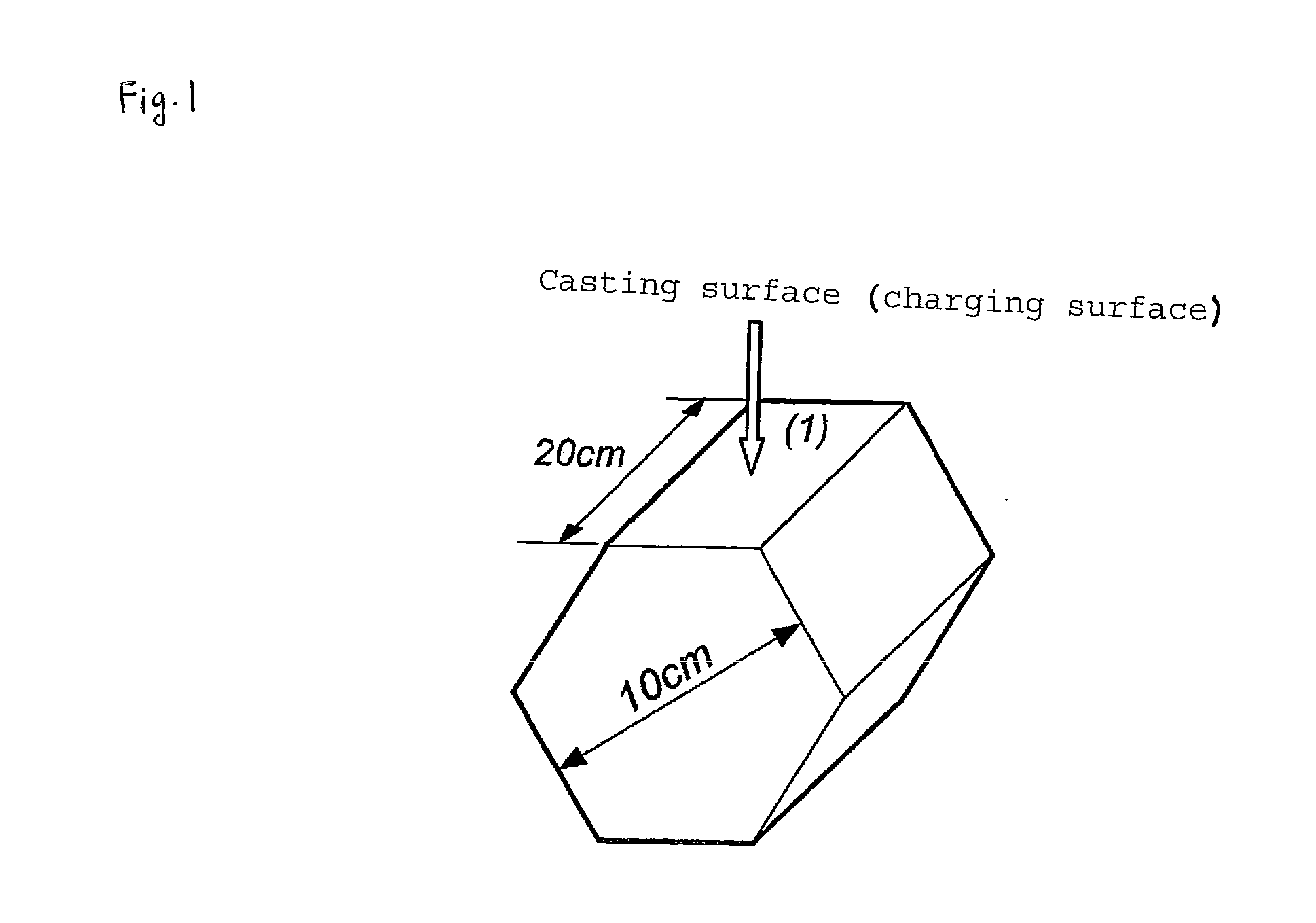Early strengthening agent for hydraulic composition
- Summary
- Abstract
- Description
- Claims
- Application Information
AI Technical Summary
Benefits of technology
Problems solved by technology
Method used
Image
Examples
production example 1
Production of Glycerin / Ethylene Oxide Adduct A-7
[0223]230.3 g of glycerin and 1.4 g of KOH were introduced into a 2-L autoclave and then heated to 130° C. at a stirring speed of about 600 rpm. Then, the mixture was dehydrated under the conditions of 130° C. and 1.3 kPa for 30 minutes. Thereafter, the reaction mixture was heated to 155° C. The reaction mixture was reacted with ethylene oxide (hereinafter, referred to as EO) in an amount of 110.1 g (that is, EO in an amount of 1 mole per mole of glycerin). This reaction was carried out under the conditions where the temperature was 155° C. and the pressure was 0.1 to 0.3 MPa (gauge pressure). After a predetermined amount of EO was introduced, no drop in the pressure came to be observed (after the reaction was finished), and then the reaction mixture was cooled to a temperature of 80° C. to give the glycerin adducts in which 1 mole of EO had been added on average (A-7 in the table). EO in these adducts was distributed as follows: unrea...
production example 2
Production of Glycerin Adducts in which 1 Mole of Propylene Oxide was Added on Average
[0226]230.3 g of glycerin and 4.2 g of KOH were introduced into a 2-L autoclave and then heated to 130° C. at a stirring speed of about 600 rpm. Then, the mixture was dehydrated under the conditions of 130° C. and 1.3 kPa for 30 minutes. The reaction mixture was reacted with propylene oxide (hereinafter, referred to as PO) in an amount of 145.2 g (that is, PO in an amount of 1 mole per mole of glycerin). This reaction was carried out under the conditions where the temperature was 130° C. and the pressure was 0.1 to 0.3 MPa (gauge pressure). After the reaction was finished, the reaction mixture was cooled to a temperature of 80° C. to give the glycerin adducts in which 1 mole of propylene oxide was added on average (glycerin PO1 in the table). PO in these adducts was distributed as follows: unreacted glycerin (PO=0 mole), 26.3% (% is on a weight basis); the glycerin to which 1 mole of PO had been ad...
production example b-1
Production of Copolymer B-1
[0240]A glass reaction container (four-neck flask) equipped with a stirrer was charged with 355 g of water, the atmosphere in the reactor was substituted with nitrogen under stirring, and the temperature of the water was raised to 80° C. A solution in which 509 g of 60 weight % aqueous w-methoxypolyethylene glycol monomethacrylate (number of moles of ethylene oxide added on average: 120; ester purity: 97%), 35.6 g of Phosmer M (a mixture of mono(2-hydroxyethyl)methacrylic acid phosphate ester and di(2-hydroxyethyl)methacrylic acid phosphate ester, manufactured by Unichemical) and 2.0 g of mercaptopropionic acid had been mixed and dissolved, and a solution prepared by dissolving 2.9 g of ammonium persulfate in 45 g of water, were respectively added dropwise to the above reaction container over 1.5 hours. Thereafter, the mixture was aged for 1 hour, and then a solution prepared by dissolving 0.6 g of ammonium persulfate in 15 g of water was added dropwise ov...
PUM
| Property | Measurement | Unit |
|---|---|---|
| Percent by mass | aaaaa | aaaaa |
| Acidity | aaaaa | aaaaa |
| Fraction | aaaaa | aaaaa |
Abstract
Description
Claims
Application Information
 Login to View More
Login to View More - R&D
- Intellectual Property
- Life Sciences
- Materials
- Tech Scout
- Unparalleled Data Quality
- Higher Quality Content
- 60% Fewer Hallucinations
Browse by: Latest US Patents, China's latest patents, Technical Efficacy Thesaurus, Application Domain, Technology Topic, Popular Technical Reports.
© 2025 PatSnap. All rights reserved.Legal|Privacy policy|Modern Slavery Act Transparency Statement|Sitemap|About US| Contact US: help@patsnap.com



